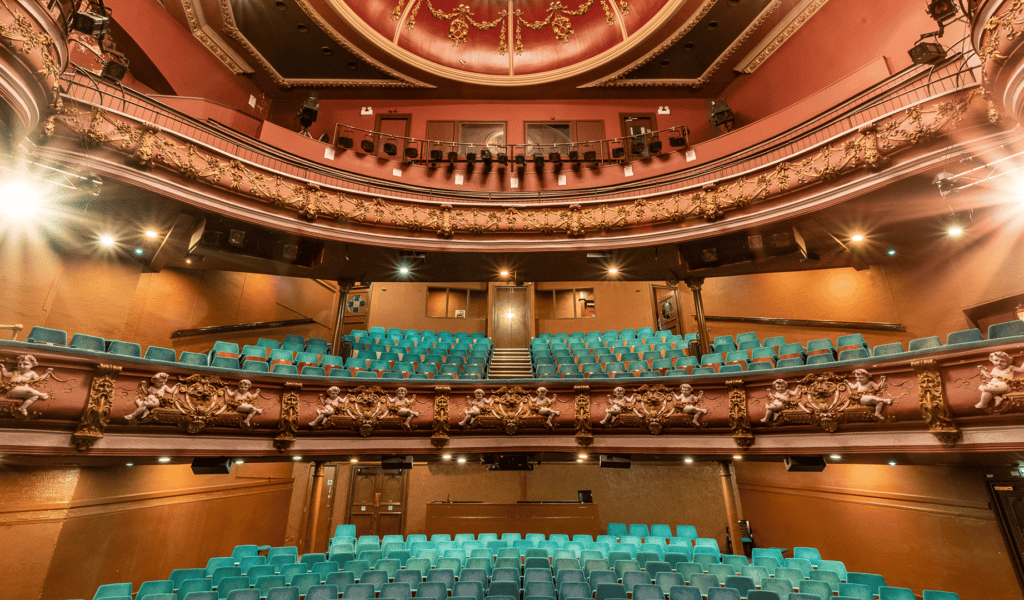
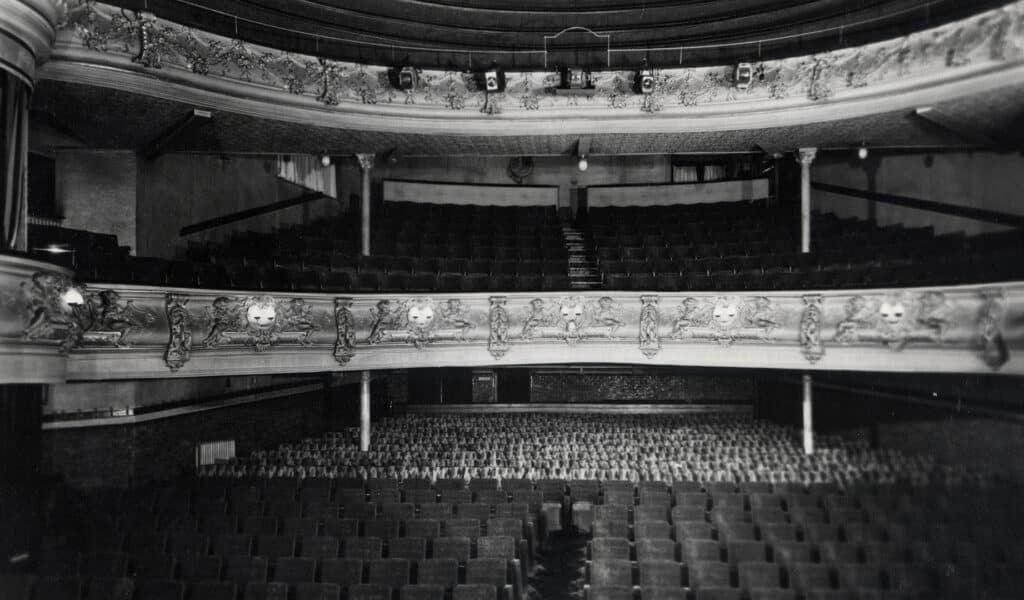
The theatre was lavishly decorated with gilded plasterwork mouldings and was notable for its distinctive blue seats which remain today. It also featured the luxury of electric lighting throughout and hot and cold running water in the dressing rooms making it a key stop on the touring circuit.
The opening performance was a charity gala in aid of British soldiers fighting the Boer War in South Africa, hosted by the Mayoress of Harrogate, Mrs James Myrtle. This was followed on 15 January 1900 by Mr J Tully’s pantomime, Dick Whittington. The theatre could house 1,300 people across the Stalls, Dress Circle, Balcony and Gallery. Ticket prices ranged from 6d to sit in the Gallery to 10 shillings for the Stalls. The theatre was scented so as audience members took their seats they would have smelt Erasmus Perfume by the Erasmic Soap Company.
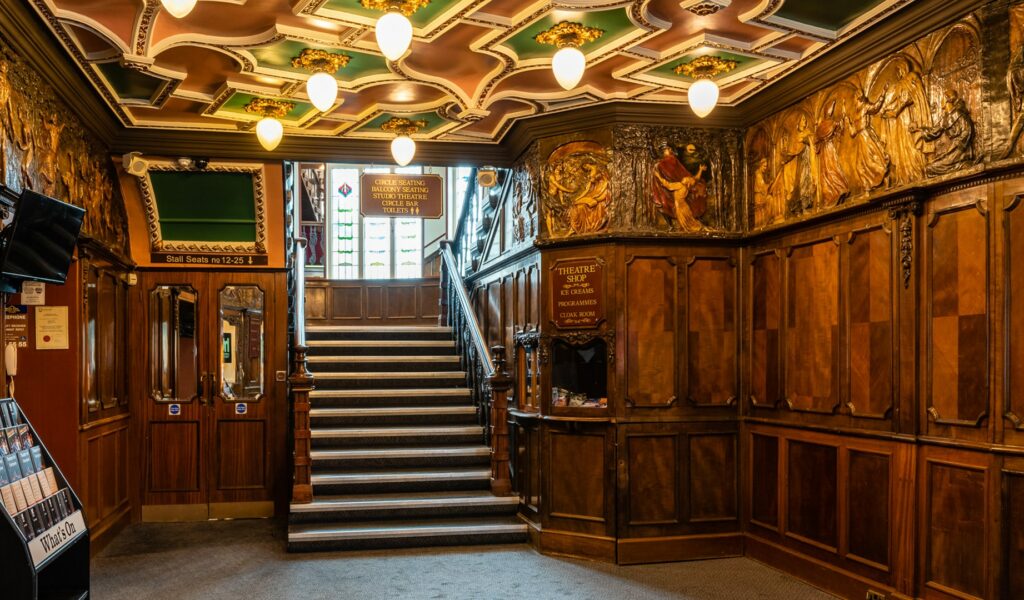
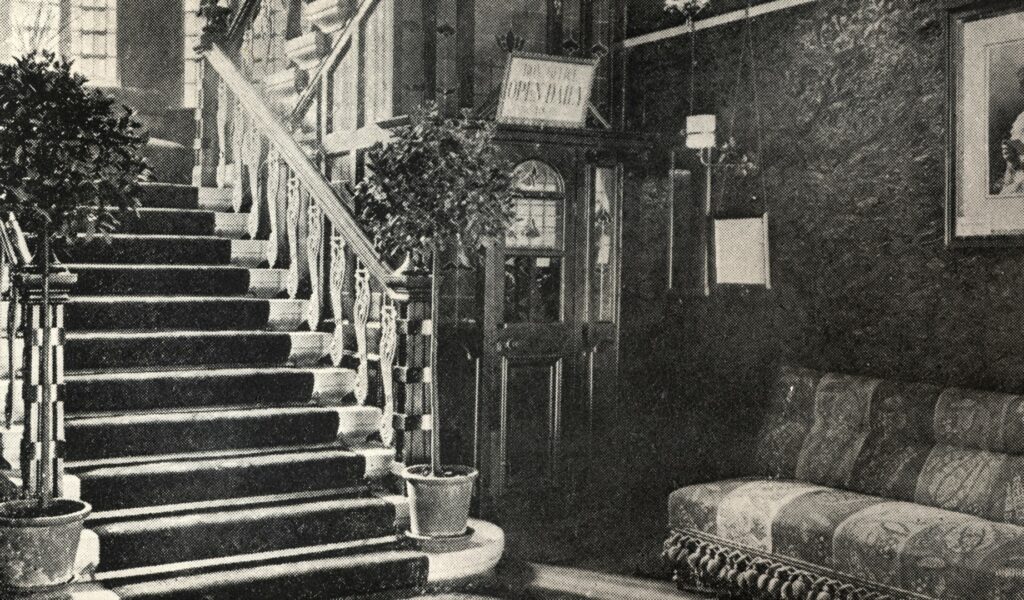
When you visit Box Office take a look up around the foyer and you’ll see a beautiful carved frieze which was sculpted by Frances Darlington. It is thought to have been added shortly before 1911 and it depicts themes from drama and literature.
William Peacock was the Managing Director of the Grand Opera House from it’s opening in 1900 through to the mid 1930’s when his wife, Addie Blanche and daughter, actress Marie Blanche took over. He also managed the Grand Opera House in York. The theatre operated as a touring venue up to the early 1930’s when the growing popularity of cinema and radio saw a decline in theatre audiences. As an answer to the problem, Peacock and his daughter formed a repertory company, The White Rose Players which was one of the first weekly rep companies in the country. The White Rose Players were a company of actors who performed a different play each week. They produced around forty-five plays a year and continued through to the mid 1950’s when once again the theatre experienced a decline in audience numbers, this time due to the growing popularity of television and in 1955 Harrogate Grand Opera House closed.
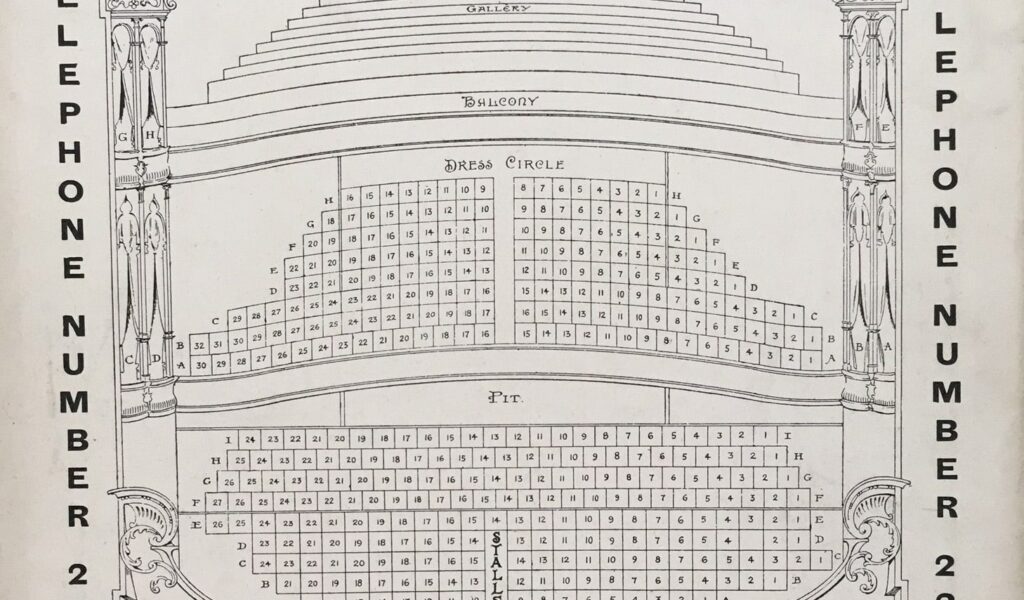
In 1958 the theatre reopened, this time as Harrogate Theatre and soon after, a non-profit making charitable trust was set up to run it. Harrogate Borough Council bought the building and became the theatre’s landlord, which they still are today. The theatre continued through the 1960’s and in the early 1970’s underwent a programme of refurbishment and alteration. At this time the seating capacity in the auditorium was reduced to 481 from 800. The balcony was reduced to the two rows we still have today, the apron and Juliet stages were added either side of the stage and the maze of corridors and small cafes and bars were opened out to form the current Stalls and Circle bars.
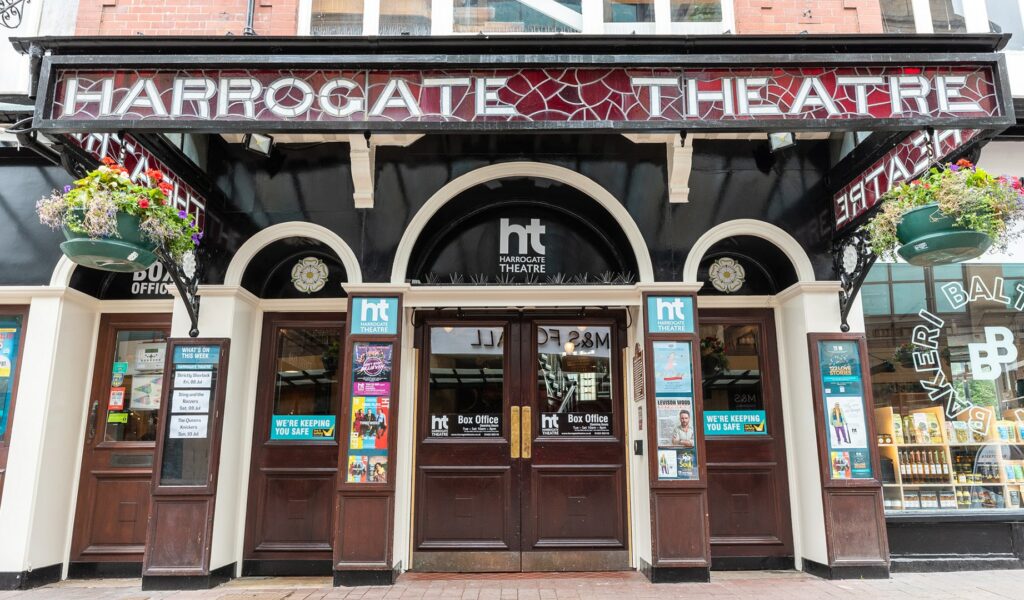
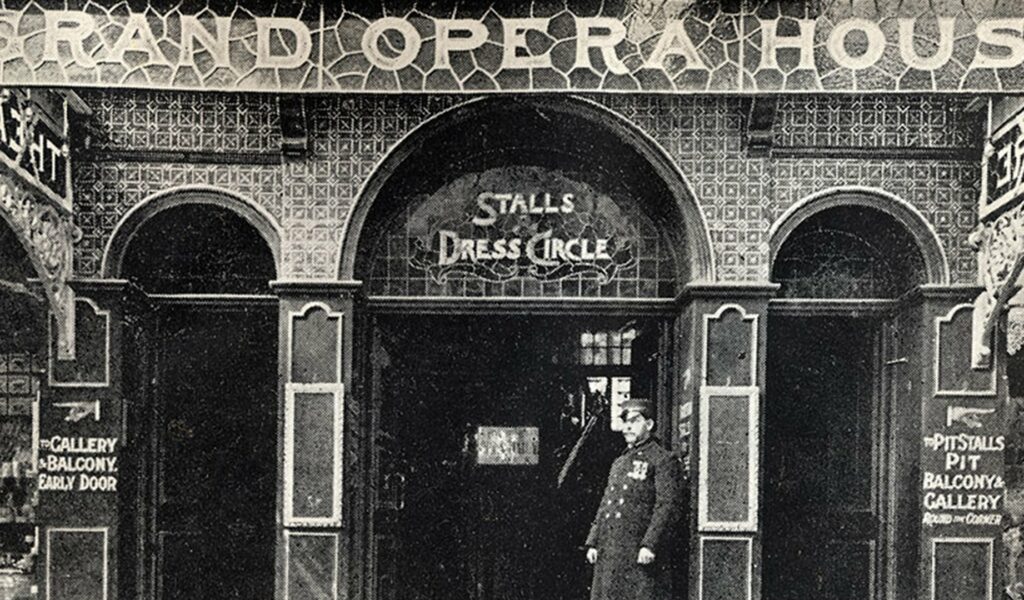
The theatre continued to run through the seventies and eighties despite a funding crisis in the mid eighties which resulted in it closing for a period of reorganisation, reopening in 1987.
Many famous names of stage and screen have trod the boards at Harrogate Theatre;
Trevor Howard, Charlie Chaplin, Sarah Bernhardt, Arnold Ridley, Brian Murphy, Kate O’Mara, Martin Shaw, John Noakes and Ben Kingsley to name a few.
In 2007 the theatre’s front of house areas were sensitively refurbished to reflect the past and accommodate future audiences.
Between 2012 and 2014 Harrogate Theatre took on live programming responsibilities for Royal Hall and the Harrogate Convention Centre. Harrogate Theatre is responsible for programming and running of live events across all these venues, but the Royal Hall and Harrogate Convention Centre remain independently managed. This means that two of Harrogate’s most established and well-loved heritage venues, as well as the renowned Harrogate Convention Centre are all working together to share resources to further cement Harrogate’s place on the arts and entertainment map.
Today the theatre welcomes a host of the best touring drama, comedy, music and dance throughout the year and produces its own award-winning, much-loved pantomime. Proudly hosting a number of community companies, a thriving Youth Theatre and Artist Development Hub, Harrogate Theatre is here so everyone can enjoy seeing, creating and sharing live performance.


